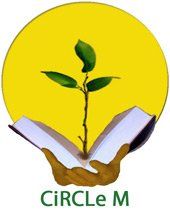The Restorative Powers of Nature – Joyce Sasse
In spite of the many hardships pioneer artist Annora Brown faced, she developed an amazing capacity for resilience. Her restorative secret, she wrote in her autobiography Sketches from Life , was the healing power found in nature.
Shortly after she graduated from art-school and started her first job, her father asked if she could return home to Fort Macleod. Her mother had a stroke.
No one in Fort Macleod escaped the life-sucking conditions of the drought-ridden 1930s. There was no medi-care, no pension, no means of income to help her pay her art-school debt.
The community itself was ill prepared to welcome this single, artistically inclined, independent-minded woman (now 32 years old).
Even as she made initiatives, through her paintings, her school-book illustrations and her writings, to show the rest of Canada the landscape along the eastern edge of the Rockies, it took more than a decade for the chauvinistic-minded Calgary art community to pay her heed.
But during visits to the mountains, the essence of her resolve surfaced. There she saw how “the towering peaks sat on their haunches … waiting for events to shape them. Their patience in the face of eternity put my small problems in proper perspective.” It helped her make her decisions. “If I was to starve, it would be with dignity, in the clean air of the out-of-doors.” She decided to stay in Fort Macleod and work from a studio in her home.
The rolling dust clouds and building thunderstorm commanded her attention. The turbulence of the wind exhilarated her – sometimes it was likened to a Wagnerian opera, sometimes like a Beethoven symphony.
The red robin, defiant after a spring snow, and the flowers that gossiped their secrets, all connected her with a Presence she knew to be God. Each new image challenged her to try, with reverence and admiration, to capture the essence that most others ignored.
She named LIGHT as “the greatest painter of all”. Notice the way it molds and blends, cuts out silhouettes and “Illuminates the tiny specks of dust that creates the glory of a sunset.”
“That part of me that reveled in solitude”, she concluded, “the nearness of growing things, and the earth itself (fed me) to repletion.”
“The wailing of the wind, barking coyotes, honking geese, beating of drums, sounds of Indian voices (singing and dancing) on a starry night.” She realized this was her world.
Even after she was forced by exhaustion to retire to the softer climate of Vancouver Island, she looked back to southern Alberta with awe. “We are so fortunate that our own backyard encompassed snow-capped peeks, glaciers, foothills and prairies. This provided our richness of experience.”
Follow Us
All Rights Reserved | CiRCLe M Centre for Rural Community Leadership and Ministry
Powered by Churchweb Canada
